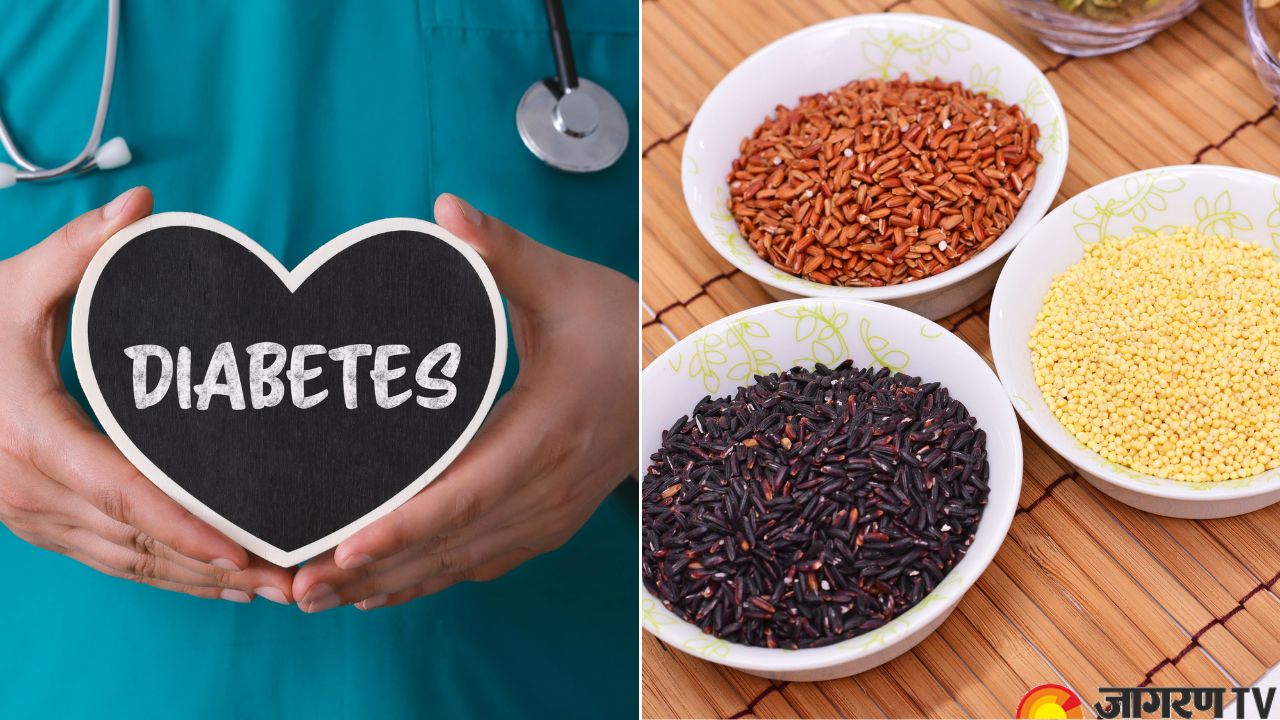Diabetes Diet: The Rice Factor of Diabetes, What Type of Rice Alternatives are Good For Diabetic Patients?

Diabetes Diet: Rice is a staple food for millions around the world, particularly in India. However, rice is typically a source of concern for diabetics due to its high carbohydrate content and potential to elevate blood sugar levels. As diabetes rates climb around the world, there is a rising interest in healthy, low-GI rice options that can help with blood sugar control without sacrificing taste or nutrients.
Let’s know more about the effects of rice on diabetes and diabetic-friendly alternatives that can be introduced into everyday meals.
How is Rice Harmful For Diabetes Patients?
White rice is a refined grain with a high glycaemic index (GI), indicating that it can rapidly raise blood glucose levels. It lacks fibre and essential nutrients due to processing, making it unsuitable for diabetics. The regular intake of white rice has been associated with an increased risk of Type 2 diabetes, particularly when portion sizes are substantial and not balanced with other low-GI meals or proteins.
The main concern with white rice is its rapid digestion, which causes a sudden release of glucose into the bloodstream. Maintaining stable blood sugar levels is critical for diabetics; thus, switching from high-GI meals to healthier ones is an important element of dietary control.
Which Rice is Good For Diabetes?
Several rice alternatives are lower in carbohydrates, have a lower GI, or contain more fibre, protein, and nutrients that help regulate blood sugar.
Brown Rice
Brown rice is less processed than white rice, preserving the bran and germ layers. It has a moderate glycaemic index and contains higher fibre, which slows digestion and glucose absorption. It's a better option, but should still be consumed in moderation.
Black Rice
Black rice, or forbidden rice, is high in antioxidants (particularly anthocyanins), fibre, and iron. It has a reduced GI, which improves blood sugar regulation while also offering anti-inflammatory properties.
Red Rice
Red rice is another whole-grain variant high in magnesium and fibre. It digests slowly and can help regulate blood sugar levels. Its nutty flavour and solid texture make it a satisfying option.
Quinoa
Quinoa is a seed that is frequently used as a rice alternative. It has a low GI, is high in protein, and includes all nine essential amino acids. Its high fibre and nutritional content help control blood sugar levels.
Millets (Foxtail, Barnyard)
Millets are gluten-free and have low GI values. Barnyard millet, in particular, is known for its low carbohydrate content and is a good choice for diabetics. Millets also improve digestion and provide lasting energy.
Cauliflower Rice
This low-carb alternative, made by shredding or pulsing cauliflower, is ideal for people looking to reduce their starch intake drastically. It's high in fibre and antioxidants, but low in calories and carbohydrates.
Barley
Barley is a fibre-rich grain that delays glucose absorption and increases insulin sensitivity. Its chewy texture and nutty flavour make it a great choice for pilafs and salads.
Bulgur Wheat
Bulgur is a whole grain that cooks quickly and has a low GI. It is strong in fibre and protein and can be used as a substitute for rice in a variety of recipes, particularly Mediterranean cuisine.
Things to Keep in Mind
Keep track of portion sizes. Even healthy grains, when ingested in excess, can elevate blood sugar levels.
Pair your rice with protein and vegetables. This helps to lower the total glycaemic impact of the meal.
Choose whole grains over refined ones. They contain more nutrients and are metabolised more slowly.
Choose multiple rice alternatives to avoid boredom and increase nutrient intake.
Related Videos
-
21 Jul, 2025
Prediabetes: How to Reverse Prediabetes? Know Diet and Lifestyle Modifications ...
-
19 Jul, 2025
Weight Loss Myths: Potential Risk of Using Fad Diets and Medicines For Rapid Weight Loss ...
-
18 Jul, 2025
-
15 Jul, 2025
Health & Ayurveda: JIVA Ayurveda Founder Dr Partap Chauhan on Obesity, PCOD, High BP, and ...
यह भी पढ़ें
-
09 Apr, 2023
IPL 2023 : आज हैदराबाद और पंजाब में कौन मारेगा बाजी, ऐसी हो सकती है दोनों टीम की प्लेइंग इलेवन
-
09 Apr, 2023
कोरियन दूल्हे ने इंडियन स्टाइल में की शादी, घोड़ी भी चढ़ा और भांगड़ा भी किया, वीडियो हुआ वायरल
-
09 Apr, 2023
-
09 Apr, 2023
आकांक्षा दुबे मामले में आरोपी समर सिंह को भीड़ ने दौड़ाया, 14 दिन की न्यायिक हिरासत








